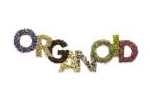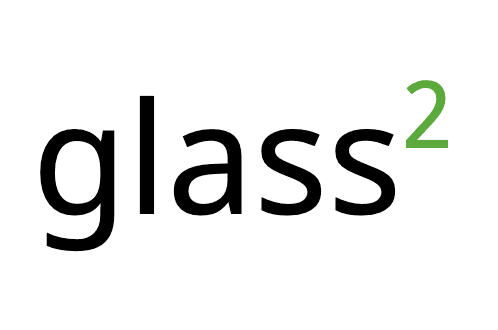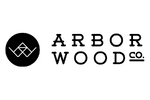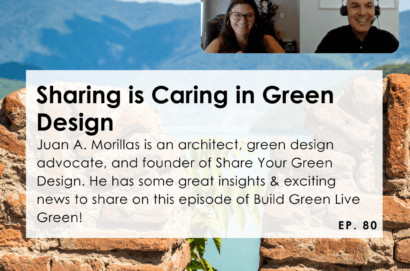Listen to this podcast and more here!
Raina Herrell: Hi, Jessica.
Jessica McNaughton: Hi, Raina. Today, Raina and I are going to cover the topic of biomimicry and building materials. We've touched on biomimicry in the past in a general, kind of at a larger scale. We want to drill in a little bit more on the building materials side because that's Care Green’s specialty, and we're starting to see more sustainable building materials introduced and more of these green projects that are using some of these Biomimicry techniques and building materials that are inspired by nature. So, Raina, we've talked a lot about this internally. Can you tell our listeners or just kind of give them a refresh on what exactly biomimicry is?
Raina Herrell: Yes. Biomimicry is the process of modeling materials, product structures, et cetera, on living organisms, elements, and systems. So, bio means life, and mimic means to imitate. So, you are imitating life.
Jessica McNaughton: So, Raina, can you explain why we want to take cues from nature in the first place?
Raina Herrell: Yes. Nature is always evolving and adapting to be more efficient and more productive. So, using biomimicry in the built environment can be really beneficial. You can make better-performing products; you can have increased efficiency for manufacturers which can lead to cost savings. And on the design side, architects and designers can create spaces that have longer lifespans and can actually improve human health for building occupants.
Jessica McNaughton: So basically, it's taking billions of years of evolution and studying those things and kind of recreating them in a manmade way.
Raina Herrell: Yes. You're using nature's blueprints to design.
Jessica McNaughton: Interesting. So, I think you see a lot of design techniques at times, like the Fibonacci sequence and things like that, that occur naturally in nature and you kind of recognize those from an artistic standpoint. But this is more about kind of a functional kind of value-added design technique using cues from nature. I think the easiest way to really understand it is to give some examples. So, do you want to start with an example?
Raina Herrell: Sure. Let's look at a biomimicry form. So, a good example here would be a Lotus leaf and stain-resistant textiles. A Lotus leaf is a superhydrophobic surface so when water hits the leaf, it beads up. And the reason it does this is that the surface of the leaf has all these micro, tiny bumps or spikes on it. And the air that's trapped between those spikes prevents the water from being able to spread out on the leaf. So, the textile industry took a hint from the Lotus leaf and developed coatings that could mimic that micro spike, Lotus leaf technology. And this is how they developed stain-resistant textiles.
Jessica McNaughton: I think there's also a paint that used the same, the same technology where it can also clean itself after a light rain. So, it's the same thing. So, the Lotus leaf is kind of like this treasure trove of these evolutionary techniques in its structure that have allowed all of this really neat man-made technology specifically around water.
Raina Herrell: Yes, absolutely.
Jessica McNaughton: One of my favorites, I guess it's both a form and function, but an example of bio-mimicry is Velcro, which was basically burdock. A guy was walking his dog decades ago and burdock got stuck on his dog and he studied the shape of those hooks. And from that Velcro was derived. So, it's kind of interesting to think about the countless number of examples of bio-mimicry that are in our day-to- day life that we may not even know we're inspired by nature.
Raina Herrell: Once you start looking for them, you kind of start to see them all over the place. And Velcro is an example of finding something in nature that works well and then bringing it into your design, which is one way that you can implement biomimicry. And the other way is, you have a problem and then you look to nature for a solution. So, it works both ways.
Jessica McNaughton: Interesting. So, there are a lot of examples out there. Shark skin is another one that if you study, you can see there's a lot of… The shape of the skin and the scales have inspired a lot of other functioning things. How does this tie back to building materials? So, what are some examples of bio-mimicry that have resulted in better building materials, which is kind of Cara Green’s wheelhouse?
Raina Herrell: One example of form and function would be centered stones or pyrolytic stones. And these materials were actually modeled after volcanic rock. So, the manufacturers found a way to take just minerals, no resins, and mimic this natural process of forming igneous rocks.
Jessica McNaughton: So, basically, what takes millions of years of pressure and heat beneath the Earth’s surface, they are doing in a lab to create surfaces that that can be used for countertops; interior, exterior, but they really hold up well to nature because they were formed by nature or they were formed to mimic geological processes.
Raina Herrell: Exactly. Lapitec actually calls their processes ‘geology in a factory.’
Jessica McNaughton: Interesting. So, one of the other examples I always think of, and it was an early example, but it was the pure bond adhesive that was used in Columbia forest products as a binder, instead of, all these urea-formaldehyde or formaldehyde-laden glues that had been used for the longest time. They studied these muscles that attached really strongly in the water. They had this really strong bond. And they studied that bond and the proteins and that when they replicated those proteins with soy proteins, then they were able to eliminate formaldehyde from their sheet goods, which was a huge step for building products. And that was 10 to 12 years ago. And there have been massive strides since then, including sintered stone that you just mentioned, like Lapitec.
Raina Herrell: Yes, absolutely.
Jessica McNaughton: Another example, actually from the products that we carry that we don't talk about that much, but… Well, we talked about the product quite a bit, but we don't talk about the biomimicry in it; the wood fibers in PaperStone, so basically, the recycled paper fibers. They have this really kind of interesting open tube structure, almost like a straw. And the way that wood fibers are oriented creates a tension in the wood that is really unique in nature. And they found that the exact orientation of the wood fiber actually is the optimal orientation to create this ideal tension. So, it's very interesting. So, that can be recreated and reinforced like fiberglass or glass products by studying the orientation of that wood fiber.
And even just the fiber, the fact that it's a tube itself when you reinforce it, like PaperStone does, with their proprietary resin, you get this really compact mass. So, that's another way that people just kind of study these natural structures and can use their positive characteristics and building materials.
Jessica McNaughton: Raina, we've talked a little bit about our own products. Are there other examples for our audience that really represent biomimicry in a way that they can understand and it will be tangible and they know what they're looking for in some of these examples?
Raina Herrell: There's kind of a famous example of full system biomimicry. It's East Gate Center. It's a building in Zimbabwe and the building was designed to mimic a termite den because termites are really good at regulating temperature and they do this….
Jessica McNaughton: That sounds so strange
Raina Herrell: It’s interesting. But termites open and close lots of little holes in their den and it brings air in and out and it keeps it at the optimum temperature. So, this architect, Mick Pearce designed the East Gate Center Building to do the same thing with its ventilation system. And the result is a super energy-efficient building. It’s a great example of full system biomimicry.
Jessica McNaughton: So, is it all automated the temperature regulation within the building?
Raina Herrell: Yes. So, at different points throughout the day, certain vents will let warm air in and let cooler air out at other times of the day.
Jessica McNaughton: Okay. Interesting. So, who would have thought that termites would be having a positive influence on how we're actually building our spaces rather than trying to get rid of them?
Raina Herrell: Yes, it’s kind of counterintuitive
Jessica McNaughton: So, there are a couple of other examples that I think are really kind of pioneering for the industry and could grow into really substantial things for the world in general. One of them is eco- cement. Basically, instead of using Portland cement, which is a very carbon-intensive process eco-cement looked at plants and algae and asked, “How do they grow?” And they saw that they had this ability to synthesize cellulose. So, they started using magnesium in trapping carbon dioxide and building these concrete structures, and making carbon-neutral cement or carbon-neutral concrete. So, that's a really interesting one and that has far-reaching implications because, for a long time, people have been trying to figure out ways to kind of mitigate the use of Portland cement. And then another one that I really find fascinating is… you talked about the Lotus leaf and hydrophobic design. There are also hydrophilic designs or hydrophilic surfaces. They're the opposite of hydrophobic. So, instead of balling up, they actually flatten out the water which makes them easier to clean.
And it's actually a feature that Lapitec sintered stone boasts as well. But they modeled that after the Namibian desert beetle, which has this little bump structure on its back that funnels the water. So, it sits up on an angle to the ocean and as the moisture comes off, it condenses on the back and it allows it to trap moisture and actually feed itself this water because it comes down this V-shape on its back and into its mouth. And studying that structure allows for these, as I said, hydrophilic surfaces, which are more easily cleaned. But there have been a lot of studies and students in universities that have used it for water recapture. So, they're able to bring fresh, clean water to communities where getting water can be difficult like desert and arid communities. So, it's really interesting. There are far-reaching implications of biomimicry. It's not. just conveniences in terms of cleanability. But there's actually, water and energy. A lot of these different systems are very efficient in nature that we're just starting to learn from.
Raina Herrell: That's fascinating. And it makes sense because it's not like this is a regional thing. It's not like biomimicry is only taking place in the Southeast. It's a global thing that all organisms partake in. And I think people are starting to implement it on purpose and we're seeing some really great results.
Jessica McNaughton: We talk a lot about biophilic design, which is bringing nature into a space. And this is biomimicry, which is looking at nature not just to bring it into a space but to see what else it can bring with it. What learning it can bring with it. So, green building is often thought to be about, about energy, but it's really expanding to include more than just things that look natural, but rather things that are inspired by nature too. So, I'm really excited to see how a lot of these building materials start to adapt and adopt these changes. And hopefully Care Green is right there with them helping them learn and kind of carrying the torch on the latest and greatest in building material
Raina Herrell: Yes, it's really exciting. The more we can adapt to our environment and kind of integrate these biomimetic techniques. I think the better our buildings and spaces will be
Jessica McNaughton: Well, great. This will be on our website, caregreen.com/podcasts. And you can also follow us @caregreen products to find the latest and greatest on both biophilic design and biomimicry. And we also have a blog where we cover these topics as well. Thanks, Raina.
Raina Herrell: Thanks, Jessica.
Jessica McNaughton: This is Jessica with Build Green, Live Green.




















